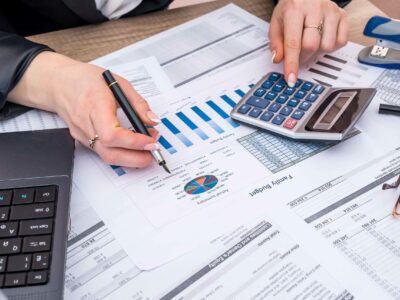Balance Sheet Equation Definition, Formula Components, Examples
Content

Before accountants post transactions to the general ledger, total debits must equal total credits on the trial balance. The financial statements are automatically created from the general ledger, using standalone accounting software or ERP systems. With this information, stakeholders can also understand the company’s prospects. For instance, the balance sheet can be used as proof of creditworthiness when the company is applying for loans. By seeing whether current assets are greater than current liabilities, creditors can see whether the company can fulfill its short-term obligations and how much financial risk it is taking.
- Within the balance sheet, the items noted below should be classified as current assets.
- Without knowing which receivables a company is likely to actually receive, a company must make estimates and reflect their best guess as part of the balance sheet.
- That can be useful, as it lets you know that the company is reinvesting in itself, but not much else is helpful about it.
- Accountants and corporate finance teams are responsible for making balance sheets and other financial statements like cash flow statements.
- In a balance sheet, the left side outlines a company’s asset, while the right-hand side showcases liabilities and shareholders’ equity.
- This financial statement provides invaluable information needed for completing various financial calculations and formulas.
Employees usually prefer knowing their jobs are secure and that the company they are working for is in good health. Accounts within this segment are listed from top to bottom in order of their liquidity. They are divided into current assets, which can be converted to cash in one year or less; and non-current or long-term assets, which cannot. As noted above, you can find information about assets, liabilities, and shareholder equity on a company’s balance sheet. If they don’t balance, there may be some problems, including incorrect or misplaced data, inventory or exchange rate errors, or miscalculations. That’s because a company has to pay for all the things it owns (assets) by either borrowing money (taking on liabilities) or taking it from investors (issuing shareholder equity).
What Is Included on a Balance Sheet?
This may refer to payroll expenses, rent and utility payments, debt payments, money owed to suppliers, taxes, or bonds payable. Horizontal balance sheets show Assets on the left side and Liabilities and Shareholders’ Equity on the right side of the balance sheet. Businesses compute Days Receivable Outstanding (DRO) and Days Payable Outstanding (DPO), which relate to accounts receivable and accounts payable turnover. This account includes the amortized amount of any bonds the company has issued.
Along with owner’s or shareholders’ equity, they’re located on the right-hand side of the balance sheet to display a claim against a business’s assets. You can list these formulas in your skills section to imply your knowledge of balance sheets, or you can list “financial statements” as a skill on its own. Additionally, you can use the description section for prior work or internship experience to talk about times when you created or used financial statements in a professional setting. A balance sheet analysis helps you get a sense of your current standing, and the first step is to look at your balance sheets from two or more accounting periods. If your results show that, say, there’s a significant percent decrease in your company’s cash, you might be experiencing financial problems. Toggl’s balance sheet template gives an overview of your balances in one single view.
The Balance Sheet Formula (Assets – Liabilities = Equity)
To do this, you’ll need to add liabilities and shareholders’ equity together. The three main components or sections of a balance sheet are assets, liabilities, and shareholders’ equity. A multi step balance sheet classifies business assets and liabilities as current or long-term (over twelve months).

Equity is one of the most common ways to represent the net value of the company. Part of shareholder’s equity is retained earnings, which is a fixed percentage of the shareholder’s equity that has to be paid as dividends. A balance sheet depicts many accounts, categorized under assets and liabilities. Like any other financial statement, a balance sheet will have minor variations in structure depending on the organization.
Owners/ Shareholders Equity
When reviewing a balance sheet, the two columns will reflect the balance sheet equation with line-item accounts showing how the two sides add up. A balance sheet reflects the number of assets and liabilities at the final moment of the report or accounting period. Most balance sheet reports are generated for 12 months, although you can set any length of time.
- The Balance Sheet Equation is the base of a double-entry accounting system.
- But when a company’s total assets are worth less than its total liabilities, shareholders’ equity is negative.
- In both cases, the external party wants to assess the financial health of a company, the creditworthiness of the business, and whether the company will be able to repay its short-term debts.
- As with assets, these should be both subtotaled and then totaled together.
- To get the correct result, you need the average value of assets during the period, not the total value at the end of the period.
Put another way, it is the amount that would remain if the company liquidated all of its assets and paid off all of its debts. The remainder is the shareholders’ equity, which would be returned to them. If a business buys raw materials and pays in cash, it will result https://simple-accounting.org/how-to-do-accounting-for-small-business-basics-of/ in an increase in the company’s inventory (an asset) while reducing cash capital (another asset). Because there are two or more accounts affected by every transaction carried out by a company, the accounting system is referred to as double-entry accounting.
Example of Balance Sheet Formulas
The balance sheet equation acts as the most basic building block of accounting. In its simplest form, the equation shows what a company or business owns what it owes, as well as owners and Bookkeeping & Payroll Services at a Fixed Price shareholders stakes in the company. A balance sheet is a financial statement that shows a company’s assets, liabilities, and shareholder’s equity, or how much shareholders have invested.
- When analyzed over time or comparatively against competing companies, managers can better understand ways to improve the financial health of a company.
- Because of this, managers have some ability to game the numbers to look more favorable.
- Business management and employees, the Board of Directors, lenders, suppliers, customers, investors, equity analysts, debt analysts, M&A analysts, accountants, and auditors at CPA firms use balance sheets.
- Accounts within this segment are listed from top to bottom in order of their liquidity.
- They are expected to last longer than a year and can depreciate over time.
- In all cases, net Program Fees must be paid in full (in US Dollars) to complete registration.
- Many of these ratios are used by creditors and lenders to determine whether they should extend credit to a business, or perhaps withdraw existing credit.
